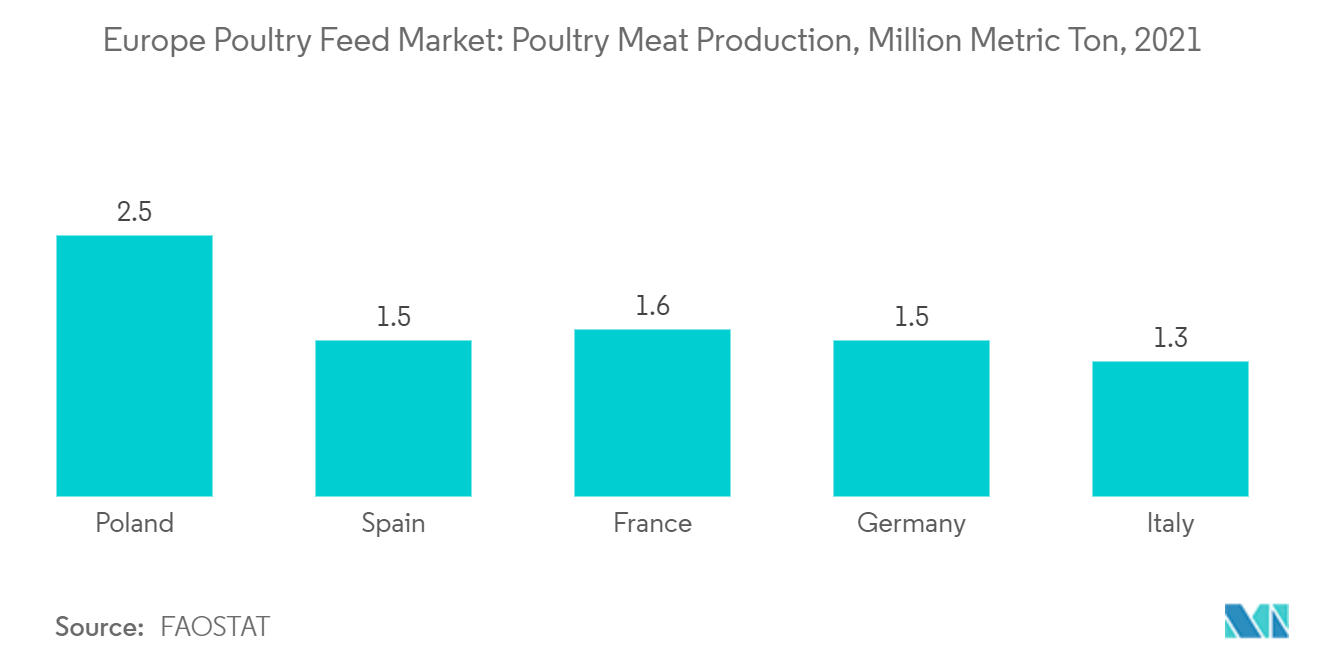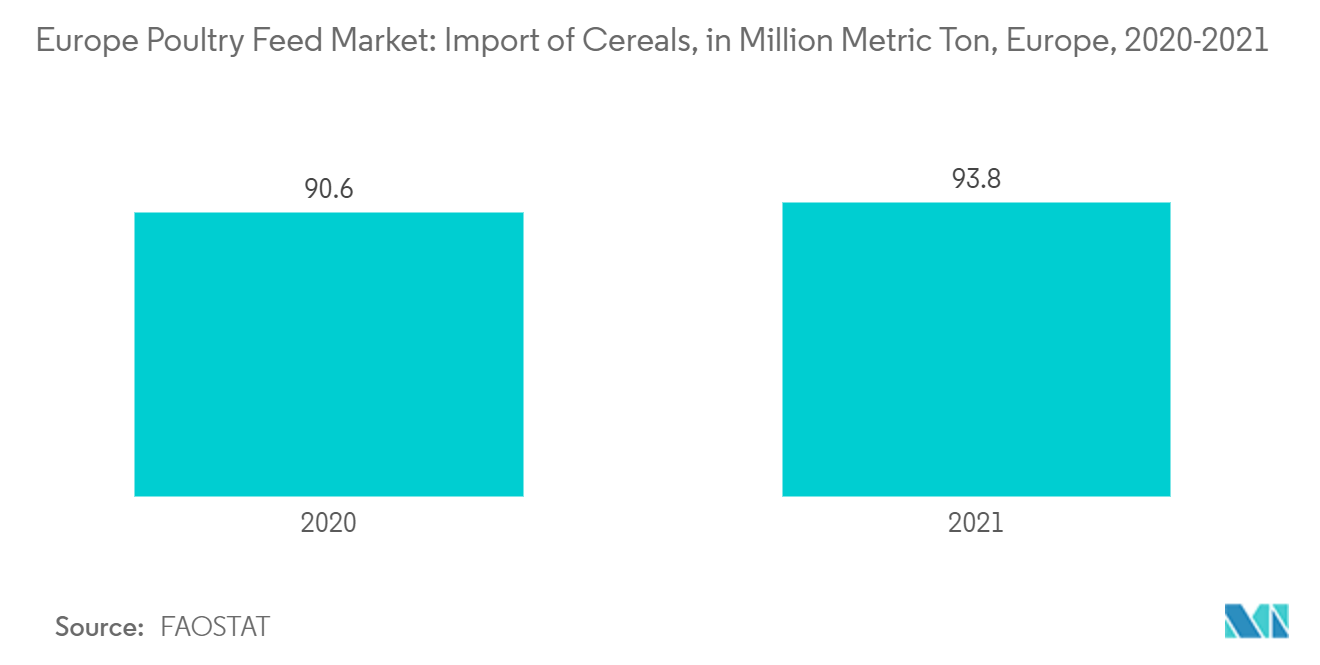Market Trends of Europe Poultry Feed Industry
Growing Meat Production Drives the Market
Due to the rising meat consumption, producers are also shifting production trends to meet consumer demand. The European Union is one of the world's largest poultry meat producers and a net exporter of poultry products with an annual production of around 13.4 million tons and imports high-value poultry products, including breast meat and poultry preparations, mainly from Brazil, Thailand, and Ukraine.
As consumption in hotels, restaurants, and institutional (HRI) outlets resumes, demand for inexpensive chicken meat, especially from Brazil and Thailand, is rising. EU chicken meat imports now also benefit from the EU decision to temporarily suspend import quotas and tariffs on Ukrainian products. Within the EU, increasing food inflation and higher energy costs will continue to favor chicken meat consumption as other animal proteins remain relatively more expensive.
According to FAO, the production of poultry meat increased in Poland with 2.5 million metric tons last year, followed by France and Germany. The meat production in the region is projected to grow further during the forecast period, which will drive poultry feed production.

The Cereals Segment Dominates the Market
Cereal grains are used mainly to satisfy the energy requirement of poultry. The dominant feed grain is corn, although different grains are used in various countries and regions of the world. For instance, in the US, Brazil and most Asian countries corn is by far the most important energy source for all poultry feed, whereas wheat is the predominant supplier of dietary energy for poultry diets in Europe, Canada, Australia, New Zealand, and the Russian Federation. In addition to the cereals themselves, their by-products, such as wheat bran, rice bran, and DDGS, are used widely in poultry feed.
Ukraine produces on average 26 million ton of wheat per year, most of which is exported. The FAO estimates that, due to the war, cereal production in Ukraine is likely to be reduced by between 20% and 30%. A more extreme scenario of a 50% reduction in Ukrainian wheat production which a deficit of 13 million ton of wheat and many lower-income countries outside the EU rely on food, is expected to be severely reduced due to the war. The main impacts of the war on EU farmers are a limited reduction in animal feed imports and a disruption in the supply chains of synthetic fertilizers, the majority of which is used to grow animal feed for industrial meat production.
According to FAOSTAT, Europe also imported cereals amounting to 90.6 million metric ton in 2021 compared to 93.8 million metric ton in 2020 which is slightly declined due to impact of pandemic in the region. Hence, the growing poultry population coupled with intensive production trends will further drive the growth of the segment during the forecast period.


